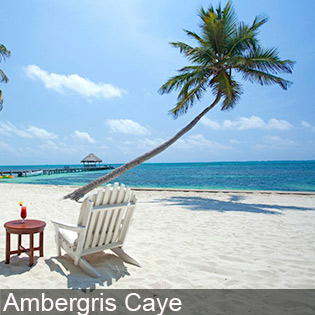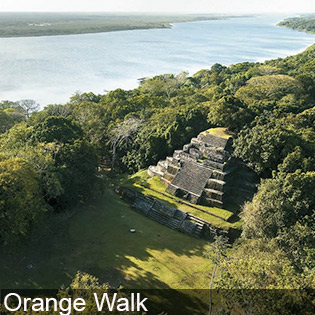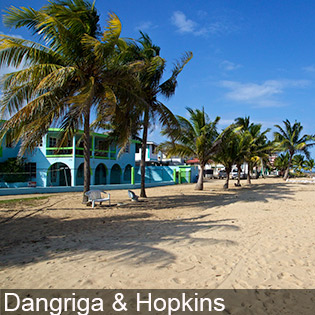BELIZE: Region by Region
Welcome to our Region by Region section. This section is intended to provide more details of each county’s regions, highlighting the region’s attributes and points of interest, including what to see, best time to see it; suggested length of stay, and more. Moreover, this section provides the independent traveler the opportunity to consider what cities and regions interest them most. While our Pre-designed tour menu provides a wide range of suggested popular tour programs, the Region by Region sections allows you to custom-design the tour of your choice.
Belize City & Central Coast
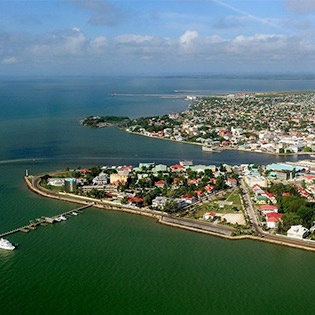



Overview
As a busy port city, Belize City is the commercial center of the country and gateway to all the regions of Belize. Quick connections—either by short flight or water taxi—to offshore islands make for great tours of snorkeling, diving and relaxing. Enjoy the Belize City tours which reveal intact colonial architectures of the past and the predominant Creole “Kriol” culture of today. While you’re here, learn the local “Kriol” (a broken English dialect). Journey to the country’s past capital “Belmopan,” where the open roads lead to endless wildlife and natural wonders befitting for adventure seekers. The largest hotels are found here, with conference facilities and professional services, as well as restaurants, bars, nightlife, Belize’s only cruise passenger terminal, the Museum of Belize and numerous historical sites. Within the Central Coast you’ll discover a little bit of everything: ancient Maya monuments, British history, cultural diversity and nature. Get an insight into Belize’s rich cultural past which continues to have present-day influences. Take up the hiking challenge at Altun Ha (Maya site) where becoming a birder is inevitable thanks to our colorful feathered residents.
Recommended Stay
One to Three nights /p>
When to go
This is a year-round destination. The best time to visit Belize is from late November to mid-April, during the country's dry season. Although this peak season draws thousands of tourists, dealing with crowds is an easy sacrifice to make for warm temperatures, clear skies and easy access to the country's top attractions. Expect showers from June to mid-November and strong winds. If you want to beat the rush of tourists and don't mind packing an umbrella, come during the rainy season in September and October. Average temperature run the gamut from 67% F to 88%F.
Highlights
- Enjoy the neverending Caribbean breeze at the famous Sea Wall. Take a stroll downtown on Albert Street & meet some wonderful locals.
- When visiting Belize City be sure to take a city tour and see old Colonial structures.
- Visit the zoo and meet Buddy and Lucky Boy.
- See the hustle and bustle of the Metropolitan Center of the country.
- Not up for walking? Take a lovely horse and buggy tour of the city.
Ambergris Caye
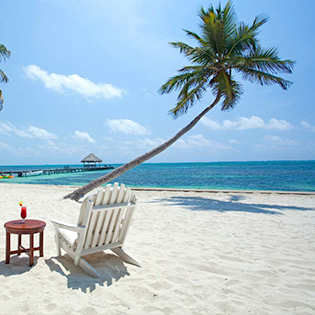
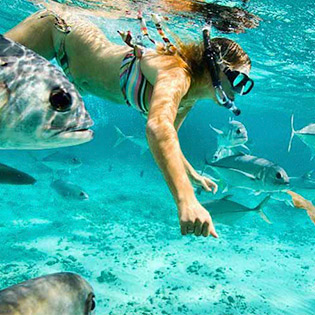

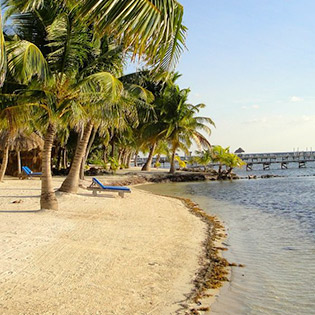
Overview
Ambergris Caye is largest island in Belize, and the main destination for travelers arriving Belize. Its currently the undisputed superstar of Belize's tourism industry, 'La Isla Bonita' is an enigma that continues to defy the odds by somehow balancing large-scale tourism development with a fun, laid-back atmosphere. Ambergris Caye remains for many visitors the archetypal tropical paradise where sun-drenched days are filled with fruity drinks and water sports. There are plenty of simple pleasures to be had here from riding a bike along a windswept beach path under the shade of coconut trees to snorkeling in crystal clear waters. The island is long and thin, measuring 25 miles long and 5 miles across at its widest point, though much of it is less than half a mile across. Although resorts are being erected up and down the coast, its outer reaches are still practically uninhabited. The remote northern extremity abuts Mexican territory, and the Hispanic influence is evident in language, customs, food and fiestas. San Pedro, the only town on the island is a mile or so long and encompasses only a few street blocks. Most of the houses are wooden with zinc roofed houses. San Pedro town is the center of Ambergris Caye and offers a wide range of restaurants, bars, souvenir shops, and banks.
Recommended Stay
Three to Seven nights
When to go
Generally speaking, the best time to visit Belize is from late November to mid-April, during the country's dry season. The average annual temperature is around 80° Fahrenheit (27% Celsius). The rainy season runs from June to mid-November. Visitors can expect predominantly warm, sunny days on ambergris Caye Island.
Highlights
San Ignacio & Cayo District
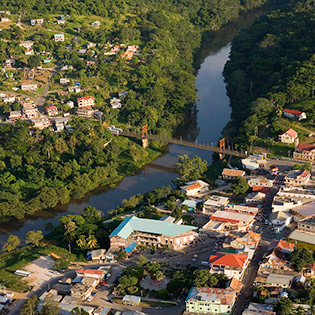
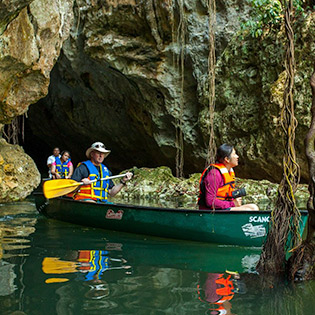
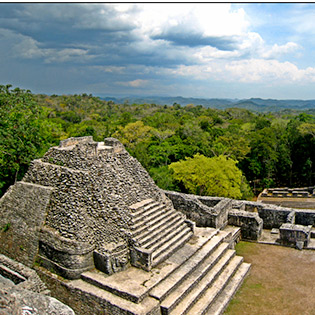
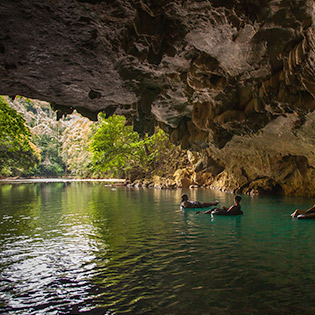
Overview
Cayo District is Belize's premier adventure and eco-activity region. The lush environs of the Wild West are covered with jungle, woven with rivers, waterfalls and azure pools, and dotted with Maya ruins ranging from small, tree-covered hills to massive, magnificent temples. Cahal Pech, Xunantunich, El Pilar and the mother of all Belizean Maya sites, Caracol, are all in Cayo. Travelers leave the coast and head inland to tube through river caves, zip-line over the jungle canopy or horseback ride through the Maya Mountains. San Ignacio is the heart and soul of the Cayo District, a vibrant traveler center from where all roads and activities fan out. Together with twin-town Santa Elena, on the east bank of the Macal River, this is the main population center of Cayo, with lots of good budget accommodation, decent restaurants and frequent transport. This region teems with nature, from botanic gardens and butterfly houses to primeval jungles and rainforests, where the only thing coming between you and the wildlife is a pair of binoculars. Accommodations range from camping and budget hostels to some of the most luxurious jungle and mountain lodges in Belize. Head to Cayo with a sense of adventure and you won't be disappointed.
Recommended Stay
Two to Five nights
When to go
Generally speaking, the best time to visit Belize is from late November to mid-April, during the country's dry season. On average, the coolest month is January. The average annual maximum temperature is: 86° Fahrenheit (30.0° Celsius). The average annual minimum temperature is: 71.6° Fahrenheit (22.0° Celsius). The coolest month tends to be January. Visitors can expect predominantly warm, sunny days in the Cayo District.
Highlights
- Discover Carocal and see the amazing view from the top. Caracol is the name given to a large ancient Maya archaeological site, located in what is now the Cayo District of Beliz
- Actun Tunichil Mukna: Actun Tunichil Muknal, also known locally as ATM, is a cave in Belize, near San Ignacio, Cayo District, notable as a Maya archaeological site that includes skeletons, ceramics, and stonewal
- St. Herman’s Blue Hole National Park covers over 500 acres (200 ha) of rich tropical rainforest. The park, which is managed by the Belize Audubon Society, is home to over 200 bird species and a variety of wildlife, including howler monkeys, which can be heard regularly throughout the forest.
- Barton Creek Cave is a natural cave in Belize, known as both an archaeological site and as a tourist destination. It is located in the Barton Creek area near San Ignacio in the Cayo District
- Xunantunich Maya ruins with the highest archeological importance in Belize
- Go to Sweet Ting for the best pastries in town.
- Head to Burns Ave. for drinks and conversation with locals.
- Canoe down the Mopan River.
Punta Gorda, Toledo
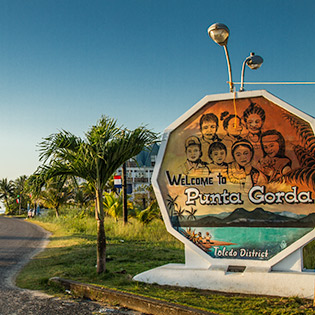
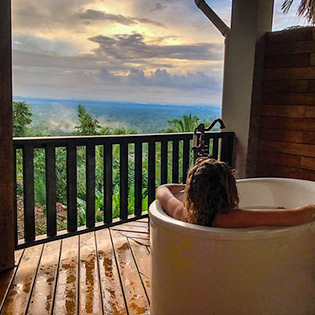

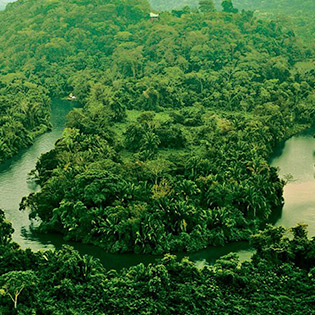
Overview
Punta Gorda is the southernmost town in Belize and is also the capital of the Toledo District. It’s a gateway to the Port Honduras Marine Reserve, lying offshore, and Guatemala. This region has wetlands, rivers, waterfalls and vast areas of protected rainforest. The population is comprised of Garifuna, Maya, East Indians, Creoles and some Lebanese and Chinese. The Town is an ideal base to explore the stunning and unspoiled beauty of Toledo District. Pristine rainforests and jungles, offshore cayes, coastal lowlands and an extensive network of caves are just a few of the top attractions in the area. Nearby dive sites on the Belize Barrier Reef are home to turtles and whale sharks. Payne’s Creek National Park has coastal wetlands and numerous bird species. The reef can be accessed from here, diving trips take place to the Sapodilla Cayes and snorkeling can be found at Snake Cayes which is closer to the shore. . Inland are the ruined Maya city of Lubaantun and waterfalls in Rio Blanco National Park.
Recommended Stay
Three to four nights
When to go
This is a year-round destination. The region is hot for most of the year with a chance of rain. The hottest months are June, May, and then August. The warmest time of year is generally early June. The summers are short, hot, and overcast; the winters are short, warm, wet, and mostly clear. Over the course of the year, the temperature typically varies from 69°F to 90°F and is rarely below 64°F or above 94°F.
Highlights
Orange Walk
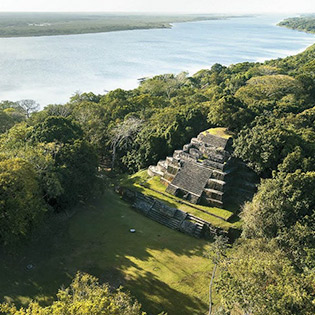
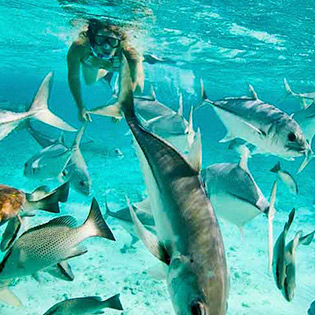

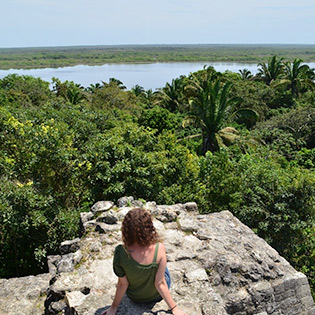
Overview
It’s affectionately called” Sugar City “, Orange Walk is approximately a 65-minute drive from Belize City. The country’s only tollbooth signals the entrance to Orange Walk town, and after paying the small toll of about US. 50 cents, one immediately notices two distinctive sites: the scenic New River with tour guide operators hugging its banks and the smokestacks of the sugar mill. In addition to the economic boost from eco-tourism, there has been agricultural diversification in recent years. The Orange Walk district is also well known for its cattle and rum production. The Orange Walk District, with a population of just over forty thousand, is the country’s third largest populated district and is much more than sugar, soybean and honey country. Orange Walk provides exotic places to visit. The sights and sounds of nature abound here, either at the famous Mayan ruins of Lamanai and Cuello, or at various places along the New River for the jungle river adventurer. And, with over 400 species of birds recorded in this district, more so than anywhere else in the country, the Orange Walk District is truly a birder’s paradise. And, of course, if one wants to continue further north after enjoying Orange Walk, 30 miles away is the border town of Corozal and the Free Zone.
Recommended Stay
Two to Four nights
When to go
The hot season lasts for 2.1 months, from April 3 to June 7, with an average daily high temperature above 89°F. The hottest day of the year is May 8, with an average high of 91°F and low of 77°F. The cool season lasts for 2.5 months, from November 21 to February 7, with an average daily high temperature below 84°F. The coldest day of the year is January 14, with an average low of 66°F and high of 82°F.
Highlights
Placencia
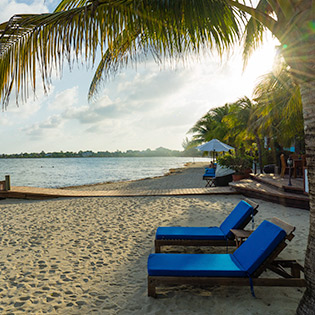
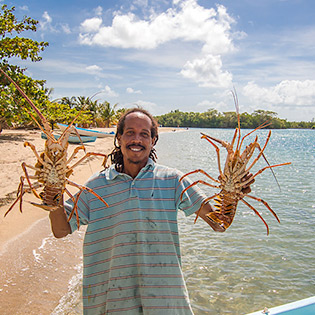
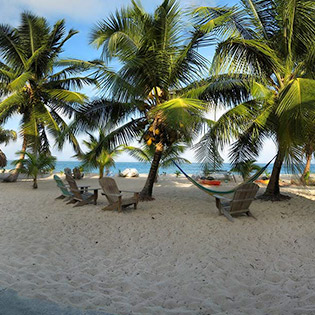
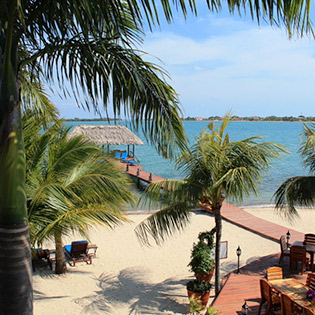
Overview
The most beautiful beaches in Belize are found along the Placencia peninsula and at the southern tip is the vibrant town of Placencia. Plus the barrier reef is a 45 minute boat ride from the shore and there are an array of snorkeling and diving opportunities here. Whale sharks can usually be found off the coast of Placencia between April and June around the full moon. Often dubbed as “Barefoot Perfect,” Placencia Peninsula is 16 miles of golden sand, the only golden-sand beaches on mainland Belize. After hanging out on the beach, snorkeling and scuba diving, head into town and get a feel for what a traditional Kriol (Creole) fishing village is like. There are also village restaurants, bars and art galleries. About the only thing Placencia doesn’t offer is stress. It’s just not allowed here. Placencia Village is a mini, downscale version of Key West, laid-back, hip, and full of atmospheric watering holes. At the end of the road, the village is the main residential center on the peninsula, with a population of close to 1,000, predominantly Creoles. It is the peninsula's commercial hub with a half-dozen grocery stores, a couple of hardware stores, and the majority of the region's restaurants and bars.
Recommended Stay
Three to Seven nights
When to go
Placencia us a year-round destination. The hottest months are June, May, and then August. See average monthly temperatures below. The warmest time of year is generally early June where highs are regularly around 90.5°F (32.5°C) with temperatures rarely dropping below 75.6°F (24.2°C) at night.
Highlights
Dangriga & Hopkins
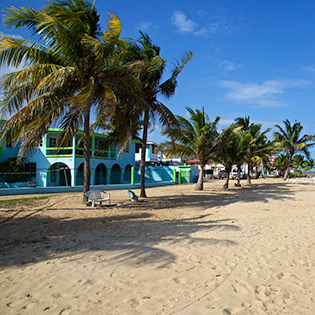
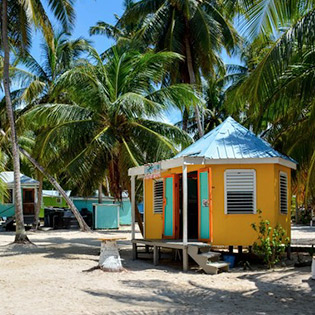
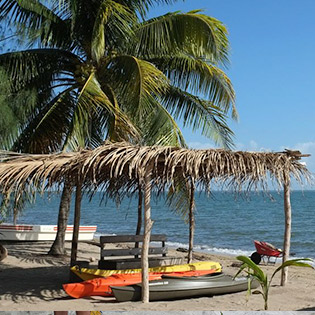
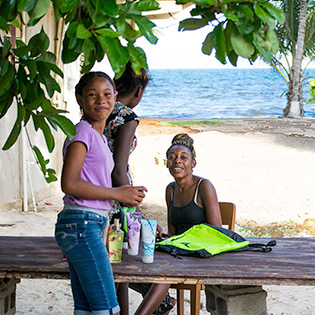
Overview
Dangriga is a town in southern Belize, located on the Caribbean coast at the mouth of the North Stann Creek River. It is the capital of Belize's Stann Creek District. Often dubbed "The Culture Capital" for its mix of diverse peoples and cultures, being the home of some of Belize's most innovative musical forms and sporting activities. Dangriga is a bustling town and is the gateway to several island resorts and to Glovers Reef Atoll. The reef is approximately 30 minutes by boat and there is some spectacular snorkeling and diving in the South Water Caye Marine Reserve. Hopkins is a small, friendly Garifuna village about a 40 minute drive from town offering and is a good base to combine activities on the reef and inland. Located on the Caribbean Sea, it was traditionally a fishing village but its cultural charm arising mainly from its Garifuna culture and scenic beaches, have contributed to a recent growth in tourism. There are now many resorts that combine the best of the Maya Mountains, the beach and the reef with a mix of the distinct and unique culture of the area.
Recommended Stay
Three to five nights
When to go
The average temperature year-round is between 88 °F and 74 °F. The hottest months are August, July, and then June. The warmest time of year is generally late July where highs are regularly around 90.1°F with temperatures rarely dropping below 79°F at night.
Highlights
- Take a nice long walk on the beach. Take a nice long walk on the beach.
- Gulisi Garifuna Museum: This museum, operated by the National Garifuna Council (NGC), is a must for anyone interested in the vibrant Garifuna people.
- Snorkel the longest living coral reef in the western hemisphere.
- Hike to discover a breath-taking waterfall amidst Maya artifacts
- Be sure to enjoy fine dining.
- Garifuna Drumming Lessons.
- Cockscomb Basin Wildlife Sanctuary / Jaguar Preserve: Also known as the Jaguar Preserve, situated within the shadows of the Maya mountains, the Cockscomb Basin Wildlife Sanctuary was established in 1984 as a reserve to protect a large population of jaguars.
The Blue Hole
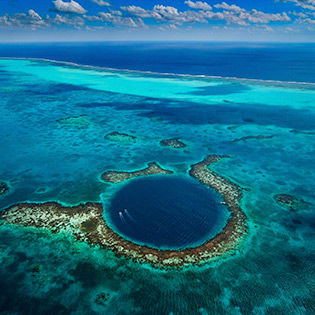

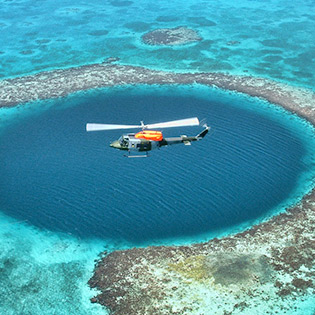
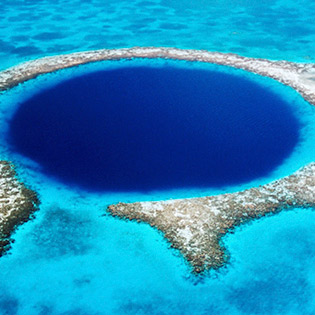
Overview
The Great Blue Hole is a world-class destination for recreational scuba divers attracted by the opportunity to dive in crystal-clear waters and see myriad species of marine life including tropical fish and spectacular coral formations. The large submarine sinkhole is 43 miles from the mainland and the crystal-clear blue water allows you to see stalactites, and sharks, lots of sharks. This is truly a one-of-a-kind diving experience. See for yourself. Jacques Cousteau called the Great Blue Hole one of the top 10 diving sites in the world. Belizeans think it’s #1, but you can decide for yourself. The marine life in these areas includes nurse sharks, giant groupers, and several types of reef sharks such as the Caribbean reef shark and the Blacktip shark. Dive excursions to the Great Blue Hole are full-day trips that usually consist of one dive in the Blue Hole and two additional dives in nearby reefs. The Great Blue Hole is on the top reasons people visit Belize.
Recommended Stay
One to Two nights
When to go
The blue hole is a year-round destination. As an underwater diving attraction, there is little variation by season or time of the year. Generally speaking, the best time to visit Belize is from late November to mid-April, during the country's dry season. Expect showers from June to mid-November and strong winds. If you want to beat the rush of tourists and don't mind packing an umbrella, come during the rainy season in September and October. Average temperature run the gamut from 67% F to 88%F.
Highlights
- Get your underwater camera ready.
- If you're not a diver, be sure to snorkel, it's amazing!
- One of the best diving spots in the world. A can't-miss for divers.
- The Great Blue Hole is a must for divers.
- The Blue Hole is shaped like a funnel and is 407 feet deep.


